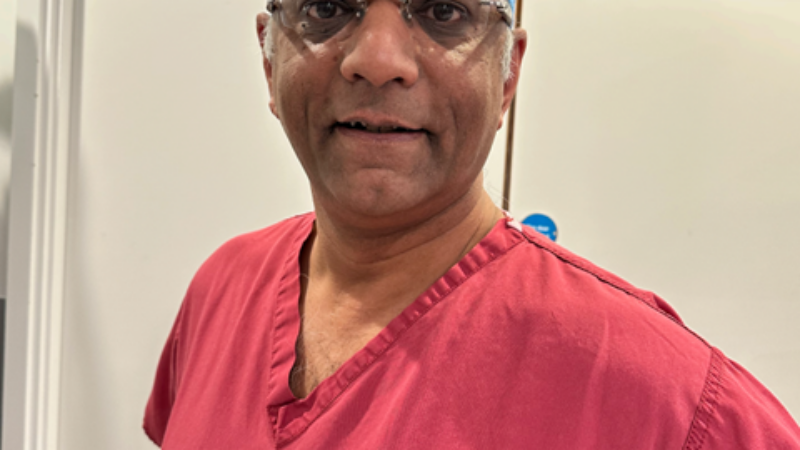
UHSussex Consultant Sandeep Chauhan’s application to pilot the creation of a green digital pathway for Orthopaedic surgery patients at Royal Sussex County Hospital and Princess Royal Hospital has been successful.
Funding has been awarded by the Accelerated Access Collaborative (AAC), through SBRI Healthcare, as part of its series of competitions helping the NHS address some of its biggest healthcare challenges. The latest competition “Delivering a Net Zero NHS” seeks to reduce the carbon footprint of the surgery pathway within the NHS.
During UHSussex Environment Week, Sandeep shares more of the details:
Tell us about yourself?
I’m a Trauma and Orthopaedic Surgeon and have worked at the Trust since 2002. I’ve always had an interest in digital and sustainable medicine, and I’m currently the first Sussex consultant to be on an NHS National Innovation Fellowship.
What inspired you to explore this green pilot project?
I’ve seen first-hand the work of my colleague, Trauma and Orthopaedic Surgeon James Gibbs, who together with Physiotherapist Lucy Cassidy, launched the first virtual fracture clinic in 2013 to great success. The model has since been rolled out at lots of hospitals around the country and I felt compelled to follow his lead and explore digitising the entire patient pathway.
How did you hear about this funding opportunity and what was involved?
I heard about the competition through my Innovation Fellowship. My colleagues and I decided to apply to run a 6-month pilot in Orthopaedic surgery at UHSussex. In the 48-page application form we had to outline our approach which centres on reducing the need for face to face visits from first referral to discharge. As part of this, we worked closely with partners such as the ICS and the local Academic Health Science Network (AHSN) to secure their support.
So, does this mean we’ll be switching to virtual appointments?
It’s not quite that simple! We know that with in-person appointments, patients retain only 60% of information discussed. However, with virtual appointments only 10-20% of information is retained. Through our pilot, we’ll be looking at how we improve this. For example, if we provided a 2-page information document during a call, patients could interact with it – rather than receiving a paper document afterwards in the post (creating a paper trail).
What are the next steps?
We will shortly be speaking to all the teams that will be involved in the project about the changes we’ll be making. Our patients will be notified by email and SMS, however, it’s important to say that they can still see us face to face if they want to and need to. We’ll be looking at the demand here as part of our analysis at the end of the 6 month pilot, including the reduction in CO2 emissions.
If you’d like to find out more about the project, please get in touch with Sandeep on email.